Bending the (UCI) rules
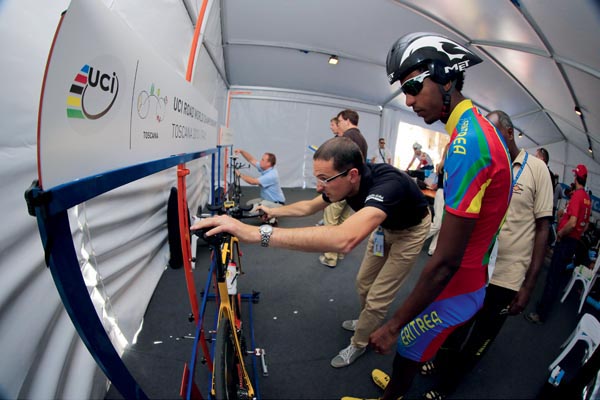
Now that Brian Cookson finds himself elected to the high office of president of the Union Cycliste Internationale, he may well find he has more urgent matters to consider than the regulations that govern equipment and technology.
These other matters may even be more important; after all, a bicycle is such a simple machine that the regulations surely make little difference to the outcome of any race between cyclists. Well, that's the theory, but is it borne out in practice?
The current UCI equipment regulations date largely from 2000, when the Lugano Charter of 1996 was ratified. The charter was initially dreamt up in response to the increasing technological sophistication of bikes designed for competition against the clock: in other words the pursuit and the kilo on the track and time trials on the road.
The machines that graced the 1996 Atlanta Olympics included some of the most outlandish ever made as designers made the most of the lack of regulation of the day.
Noting the possibility that cycle racing might, as a result, become a test of technology rather than physical prowess, the UCI decided to act before it was too late and came up with a series of regulations, since extended, that governs aspects of cycle design from the shape and size of frame tubes to the permissible length of handlebar extension.
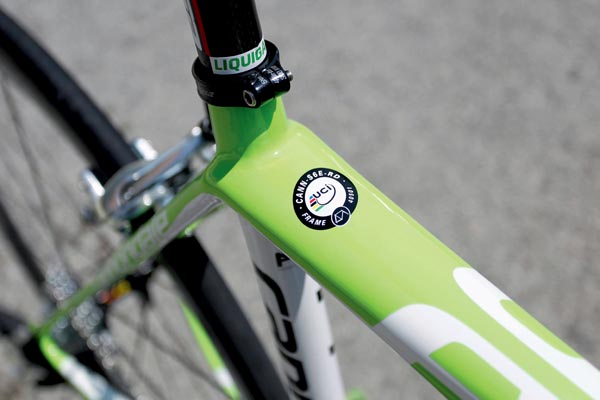
This was not the first time the union had been forced to act to constrain the march of technology. Previously, the most famous was the ban on recumbent cycles introduced in 1934 following a series of successes by recumbent-mounted riders of moderate ability over leading ‘aces' on upright machines and the setting by the recumbent-riding Francis Faure of an exceptional Hour record.
The ban was imposed primarily because the sport's governing body did not wish to see its most prestigious races won on machines the public had, at the time, shown little interest in buying despite them being readily available.
Get The Leadout Newsletter
The latest race content, interviews, features, reviews and expert buying guides, direct to your inbox!
The regulations that followed dictated the layout of the cycle in an unnecessarily complex way; the bottom bracket axle had to be between 240 and 300mm above the ground, the nose of the saddle could be no more than 120mm behind the bottom bracket axle and the distance from the bottom bracket axle to the front wheel spindle could be between 580 and 750mm.
Easier would have been to permit a maximum wheelbase of, say, 1,100mm and to dictate simply that the bottom bracket axle fall within the wheelbase.
What a drag
The regulations also forbade the use of any non-structural fairing or other means of reducing air drag. The UCI flunked the first real test of the regulations, which came in 1984 with Francesco Moser's two Hour record rides. Both were set on a machine with disc wheels, which after some discussion were deemed acceptable as the skin of the disc performed the structural function of the spokes in a conventional cycle wheel.
The wheels were also of different sizes. There was, of course, no possibility of direct comparison between Moser's 51.151km and the 49.431km ridden by previous record holder Eddy Merckx on a conventional cycle; a precedent had been set.
The next component to gain UCI accreditation was the elbow-rest handlebar credited to ski coach Boone Lennon and ridden to victory in the 1989 Tour de France by Greg LeMond. The American overcame a 50-second deficit on Laurent Fignon, who did not have elbow-rest bars, to win the Tour by just eight seconds. The result was allowed to stand despite the clear injustice done to Fignon; elbow-rest ‘aerobars' had arrived.
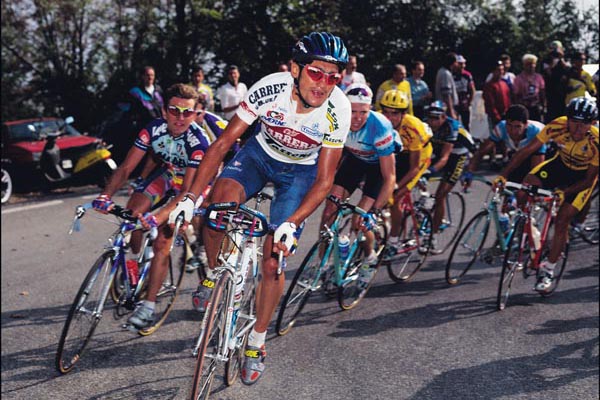
Spinaci bars won favour with climbers like Chiappucci
New millennium, new rules
The list of UCI equipment fumbles extends to its treatment of Hour record holder and world pursuit champion Graeme Obree, who was on one occasion disqualified from a World Championship after the UCI notified him of a rule change only an hour before his qualifier, to its ban on Cinelli's Spinaci mini-aerobars (that bankrupted the company) after several years of incident-free use and to the ban on Mavic's Mektronic brake levers after they had gone into production.
It was, therefore, unsurprising that head fairings that offered no protection in a crash were permissible despite being no more or less than a means of reducing air drag.
With so much slack apparently available, the designers of the 1990s set about using the new carbon-fibre composites technology to build cycles along the lines of Chris Boardman's Olympic pursuit-winning Lotus machine, creating such wonders as the Pinarello Espada and the Australian Institute of Sport Superbike.
The Y2K regulations put an end to the fun but failed to dampen innovation and have been repeatedly strengthened in an attempt to rein in manufacturers, most recently by insisting that every new frame and fork design be submitted to the UCI for assessment and approval at cost to the manufacturer before it can be used in competition (it later cut the price after industry uproar).
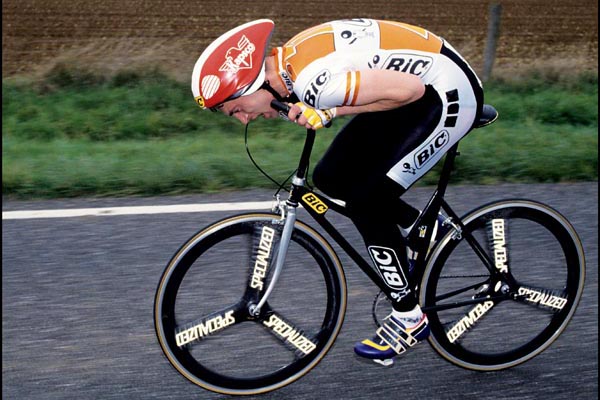
Obree's pioneering spirit was crushed by the UCI
Ridiculous regulations
Complex though the UCI technical regulations generally are, they include some that are simple and either demonstrably unfair or unnecessary.
The most egregious is the fabled insistence on placing the nose of the saddle at least 50mm behind a vertical through the bottom bracket axle. This can be reduced to 0mm in some track disciplines provided the rider's knee does not precede the forward pedal axle with the crank horizontal.
Unless merely whimsical, the idea can only be to prevent anyone obtaining a notional biomechanical advantage by riding with the knee further forward than the pedal axle, but it is entirely possible that a very tall rider with long legs could ride a cycle that complied with the 50mm rule and still ride with the knee well in front of the pedal axle. The smaller rider is at a disadvantage.
There's a minimum weight limit of 6.8kg on road bikes. This is easily reached in road bikes of any size, meaning a tall, powerful cyclist of, perhaps, 80kg may ride a bike of the same weight as a shorter rider of, say, 60kg. The lighter rider is penalised by having to propel a machine weighing a much greater percentage of bodyweight.
Perhaps the most ludicrous implementation, if one ignores article 1.3.014 requiring that "the saddle support shall be horizontal", has been the enforcement since the start of 2013 of article 1.3.002, the one that forbids modification, in any way, of ‘the equipment given by the manufacturer used in competition'.
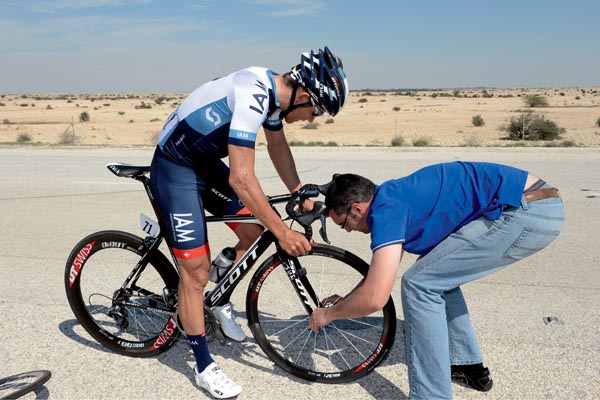
UCI rules mean wheel changes are slower than ever
In particular, team mechanics are no longer allowed to file off the safety tabs or ‘lawyer's lips' moulded into fork dropouts to prevent the wheel falling out if the quick-release lever has not been done up.
Apparently this is to improve rider security and may be related to insurance concerns. Front wheels have been known to come loose in a crash but any suspicion that the wheel fell out before the crash can be allayed or confirmed by inspecting the dropouts, which will show signs of abrasion damage if so.
Since the quick-release skewer invented by Tullio Campagnolo has served cycle racing with impeccable reliability for 80 years, it is hard to see how it has suddenly proven untrustworthy.
A time for change
Better would have been for the UCI to recognise the futility of the tabs, since it is unclear how obliging the user to readjust the skewer nut with every wheel installation can enhance the security of those lacking the know-how to operate a wheel quick-release mechanism in the first place.
A rule requiring their removal for UCI-sanctioned racing would have made more sense. Instead, wheel changes are slower and unlucky riders have to close a bigger gap on the peloton having received one.
Perhaps, given the highly technical nature of cycle sport, it is too easy to carp at the UCI's attempts to govern racing cycle design. The union can make it harder, surely, by ensuring that its efforts are both fair and comprehensible. Now's a good time for a reappraisal.
This article originally appeared in the October 10 2013 issue of Cycling Weekly magazine

Thank you for reading 20 articles this month* Join now for unlimited access
Enjoy your first month for just £1 / $1 / €1
*Read 5 free articles per month without a subscription

Join now for unlimited access
Try first month for just £1 / $1 / €1
Founded in 1891, Cycling Weekly and its team of expert journalists brings cyclists in-depth reviews, extensive coverage of both professional and domestic racing, as well as fitness advice and 'brew a cuppa and put your feet up' features. Cycling Weekly serves its audience across a range of platforms, from good old-fashioned print to online journalism, and video.
-
 How to watch Paris-Roubaix and Paris-Roubaix Femmes 2025: Everything you need to live stream the Hell of the North
How to watch Paris-Roubaix and Paris-Roubaix Femmes 2025: Everything you need to live stream the Hell of the NorthAll the details on broadcasters for Paris-Roubaix so you can watch Tadej Pogačar and Mathieu van der Poel in one of the biggest cycling races on April 13.
By Adam Becket Published
-
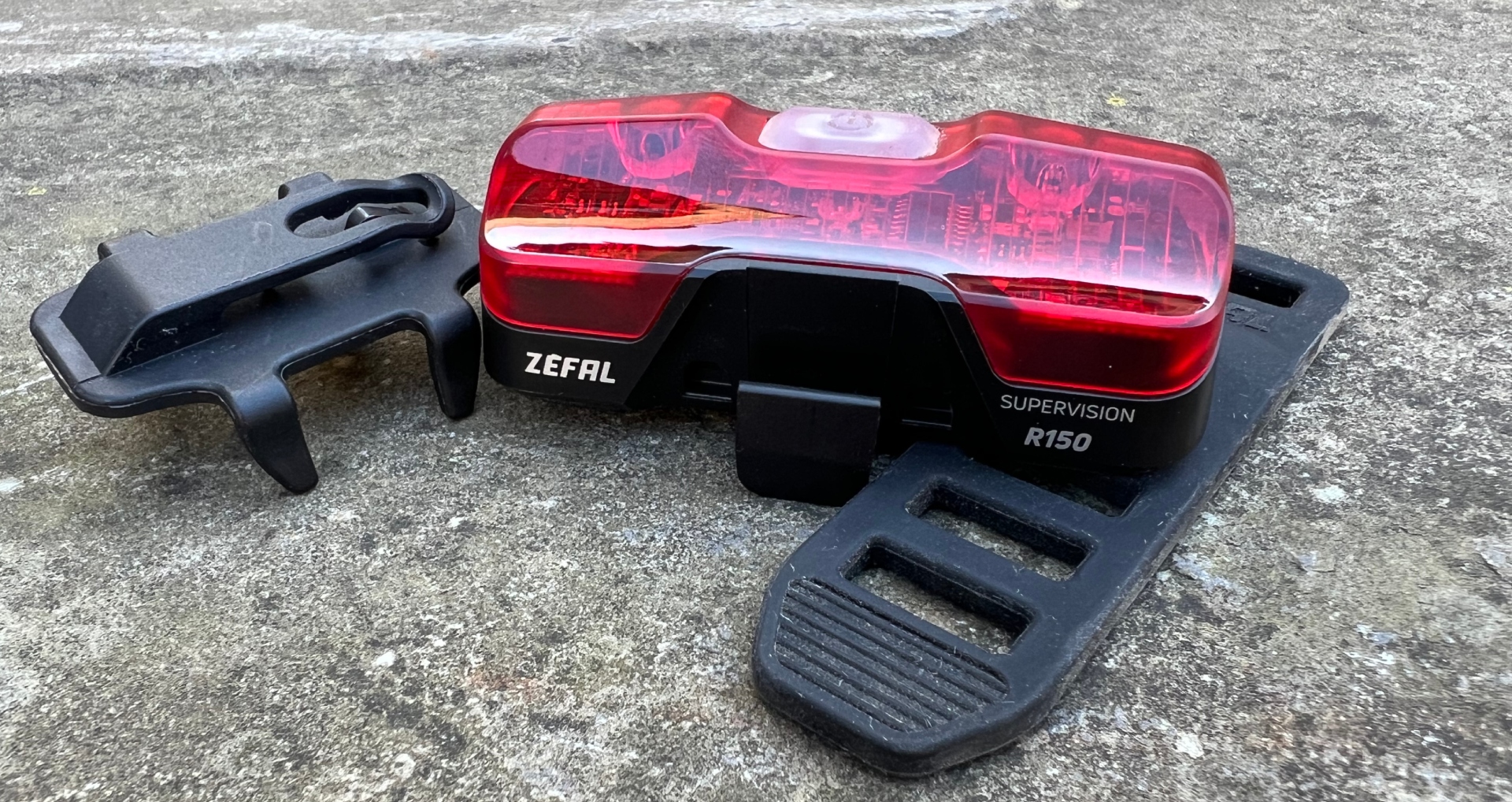 Zefal Supervision R150 rear bike light
Zefal Supervision R150 rear bike lightA versatile and bright rear LED light that offers good visibility to other road users day or night
By Hannah Bussey Published